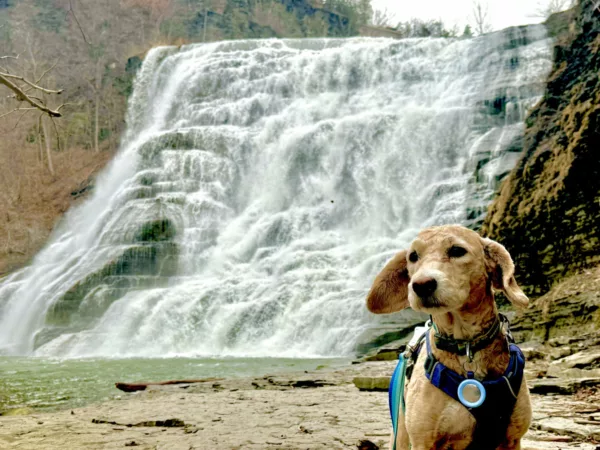10 Things to Know Before You Go Cross-Country (XC) Skiing

The appeal of an easy-to-learn, inexpensive activity that doesn’t require a big investment in clothing or gear is easy to understand. It’s a sport that gets you out into the fresh air, is good for all ages and abilities, and boasts a low percentage of serious accidents. Ski patrollers at cross-country (XC) ski areas have a pretty leisurely gig because they don’t have to assist with many serious ski injuries.
To make the most of a day on the hills, it does help to know what you’re getting into and to be prepared. Read on for ten tips to help get you started:
Dress in Layers
Unlike downhill skiing, you don’t necessarily need traditional snow clothes. Whatever you wear for a winter run or bike ride should fit the bill. Start with tall wool socks, cozy tights and add a few sweat wicking layers up top (you will work up a sweat). A breathable windbreaker, toque, gloves and sunglasses will cap off your look. Add a small backpack to hold your necessities, including water and snacks and you’ll be set to go.

Choose Your Style
There are three main types of Nordic skiing. You can either classic ski, skate ski or backcountry ski. With each one, your toe is attached and you heel is free (not fixed like with downhill). Propulsion is about using your muscles and gear to move, not just gravity.
Classic skiing: uses a gliding motion in preset, parallel tracks. Almost anyone can successfully shuffle along flat trails, even if they’ve never had skis on before.
Skate skiing: looks a bit like a speed skater on ice. Done outside the tracks, the skating motion propels you forward. Fun and fast, it can be harder to learn than classic, but it’s a great workout.
Backcountry touring: skiing out-of-track outside ski areas is generally not for beginners. It requires a different type of ski and a range of backcountry skills (including avalanche safety) and safety gear—depending on where you head.

Get the Right Gear
Cheaper and lighter weight than downhill gear, many people opt to buy used beginner XC gear and trade up as they improve. A quick call to several sports stores, including Sports Junkies in Vancouver, tells me that XC ski gear has never been more popular, “We get several calls a day from people looking, but our selection of cross-country skiing equipment selection is very limited right now.”
The good news for those just starting out is that rental gear is available at most XC ski areas.

Cross-Country is For Everyone
Many clubs run programs for people with disabilities and offer adaptive ski programs, sit skis or options for the visually impaired. For families, chariots or paulks (for towing babies) are often available for rent, as are teeny-tiny skis for your littlest skiers.

Lessons are for Everyone
While just about anyone can shuffle along on XC skis, learning a few basic techniques can elevate your experience from something that feels like a slog into a rhythmic gliding motion that can feel as effortless as walking.
Most ski areas offer a range of different lesson options from private coaching to group lessons.
Note: Check with your local ski area for lesson availability during Covid-19 restrictions.

Where to Go
If you are fortunate enough to have more than one ski area nearby, you’ll want to start in the place that offers the most beginner options—these are typically designated as green runs.
Other great places to ski include relatively flat parklands or golf courses where skiers are welcome and other skiers have set tracks. When you’re starting out, it’s better to avoid off-trail backcountry areas like open meadows and through trees—the snow can hide hazards like tree wells, creeks and ponds.
Some ski areas also have lit night runs and dog-friendly areas—though you may want to save these for when you have a bit more experience under your skis.
Note: Always check the weather report before setting out.

Bring a Friend
Like all outdoor sports, it’s safer to venture out on the trails with a partner. If you can, choose someone with some experience who can offer advice on what to wear and tips on how to ski.
If you don’t have a partner to join you, check into your local ski club—most have an affordable annual fee and offer perks like social ski trips, clinics and lessons.
P.S. Want to read more in-depth adventure stories in print?
Subscribe to Explore magazine today!
Click here for subscription options.















